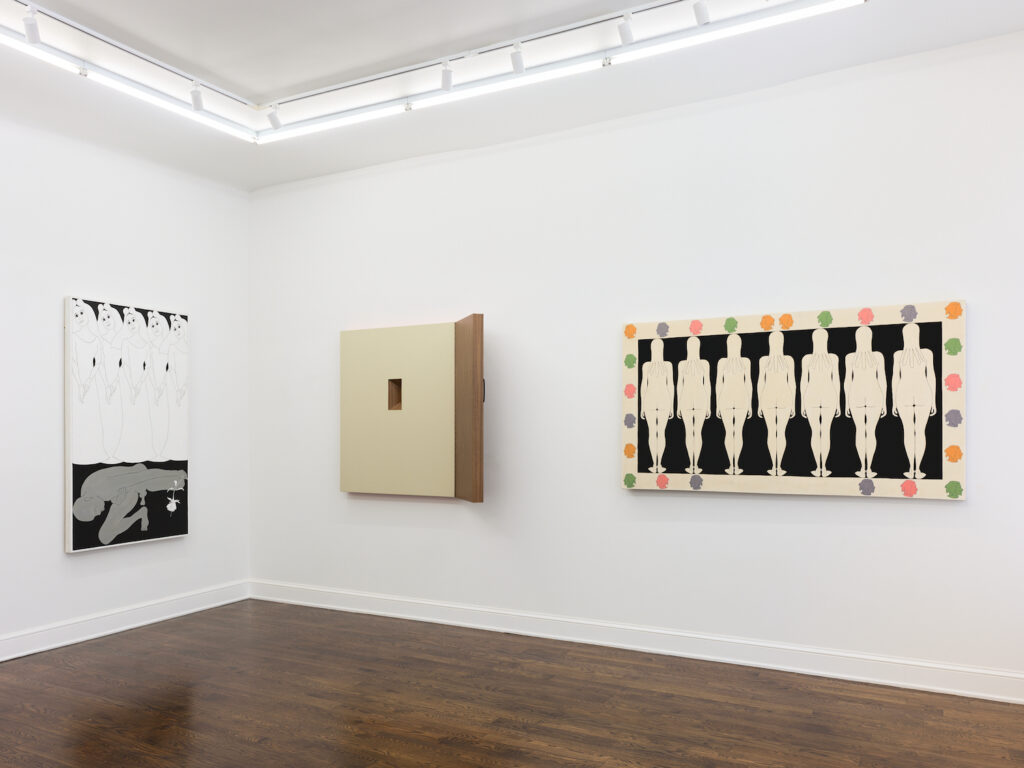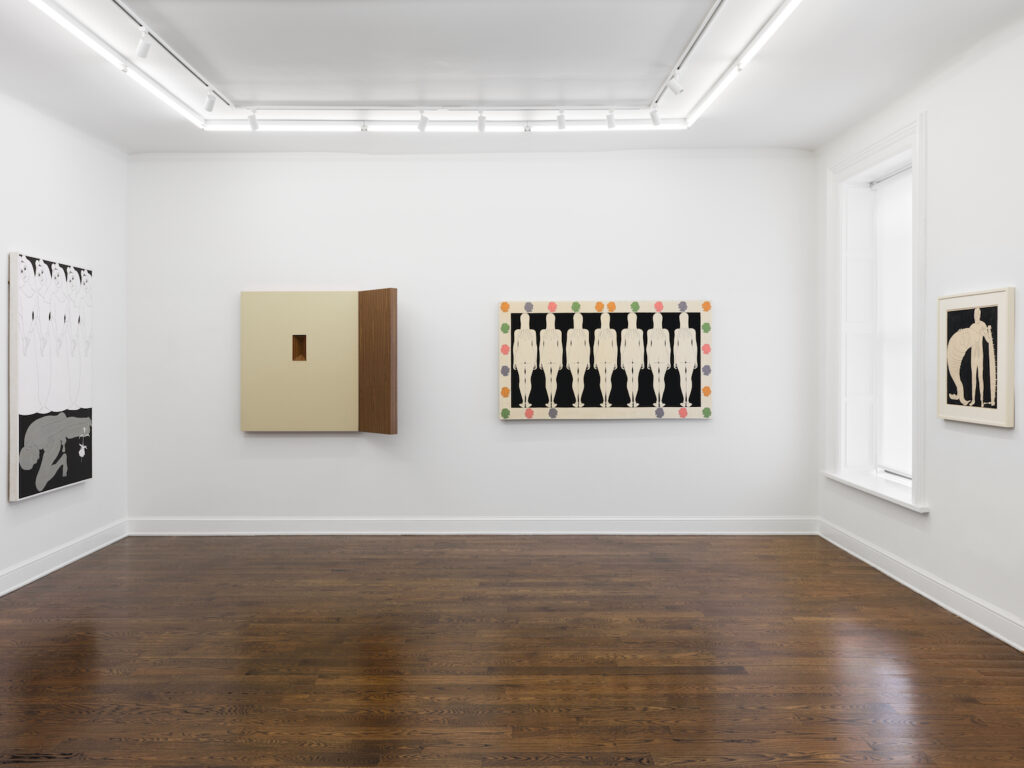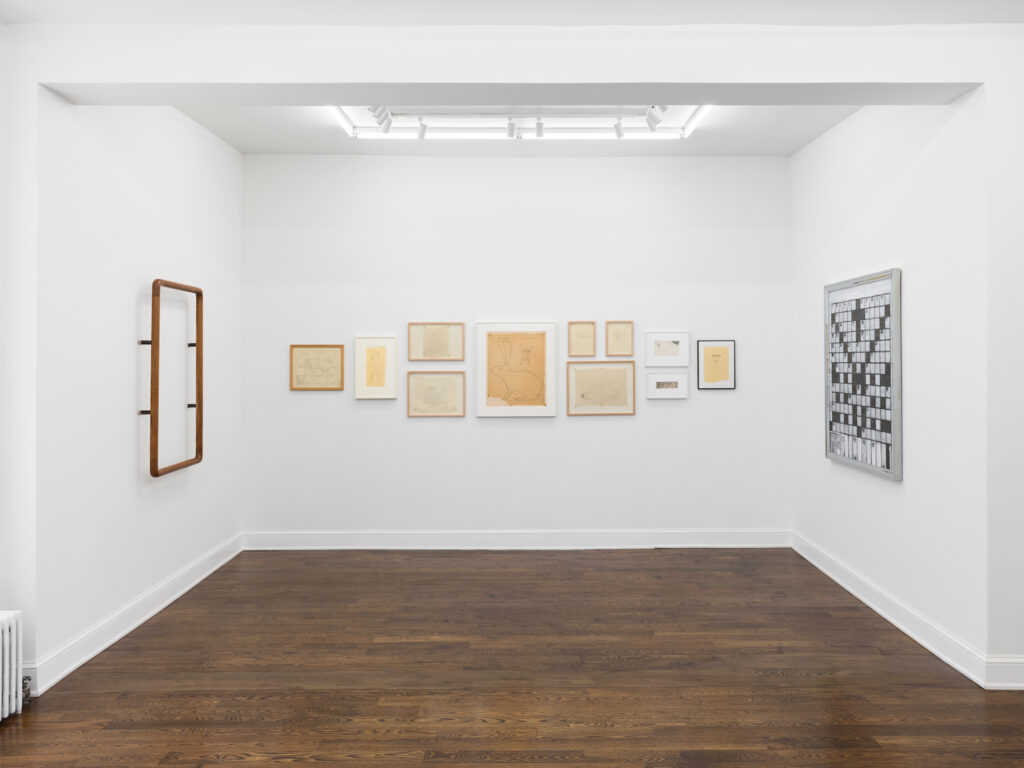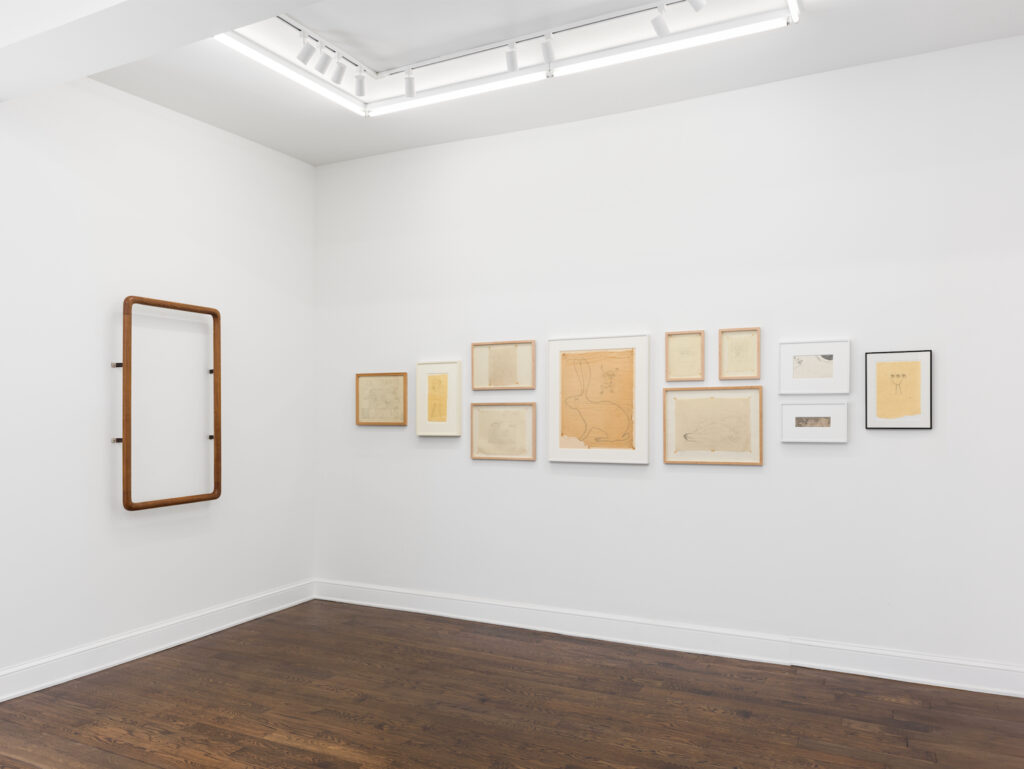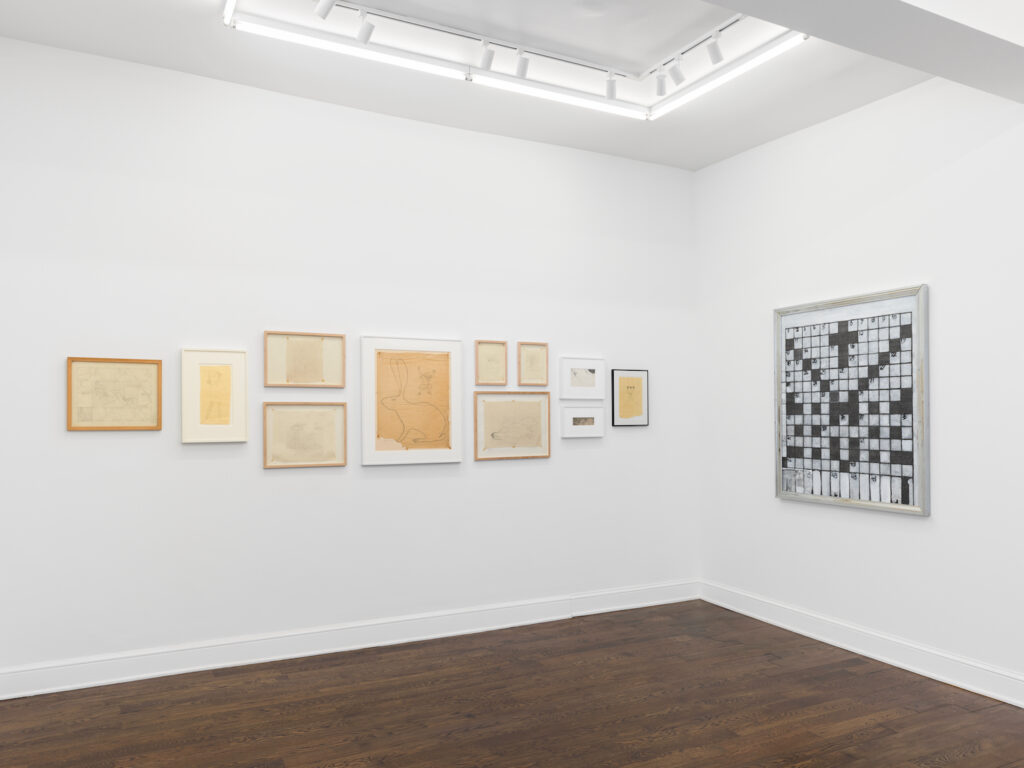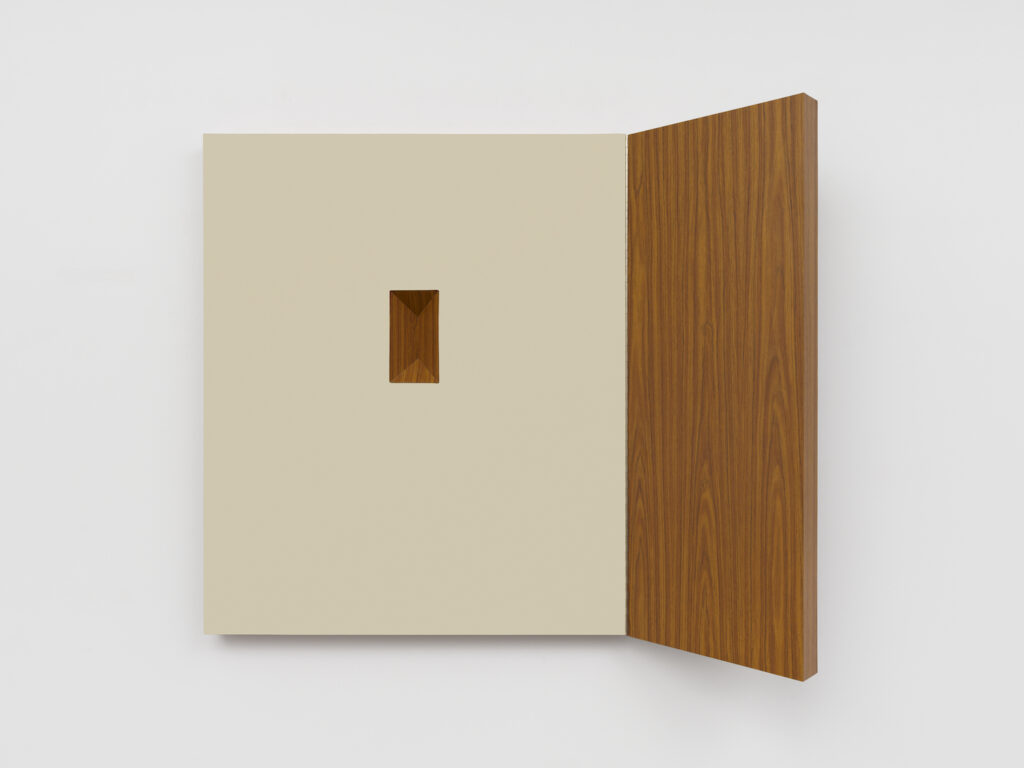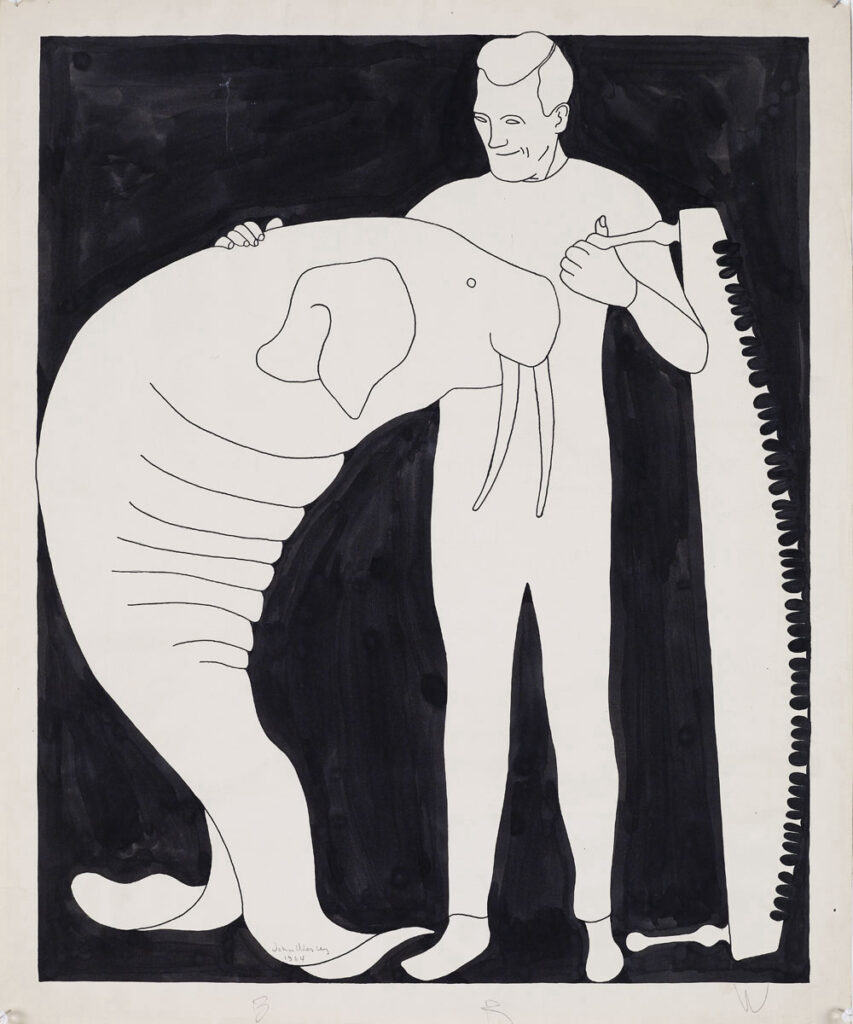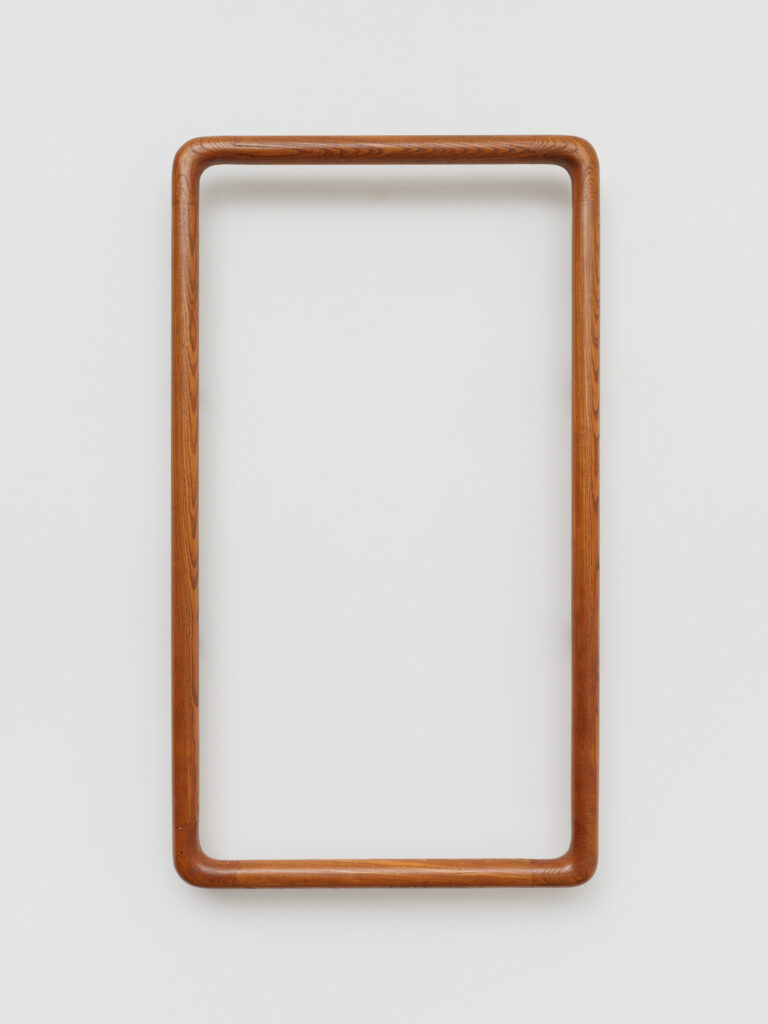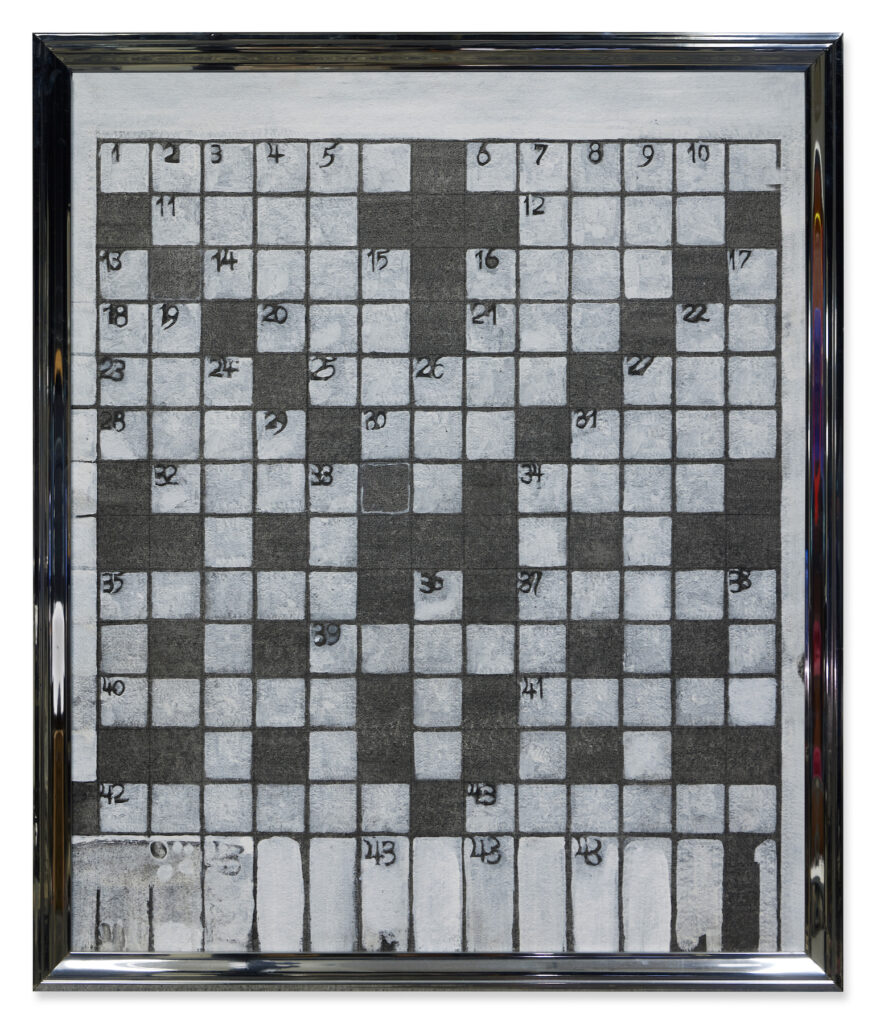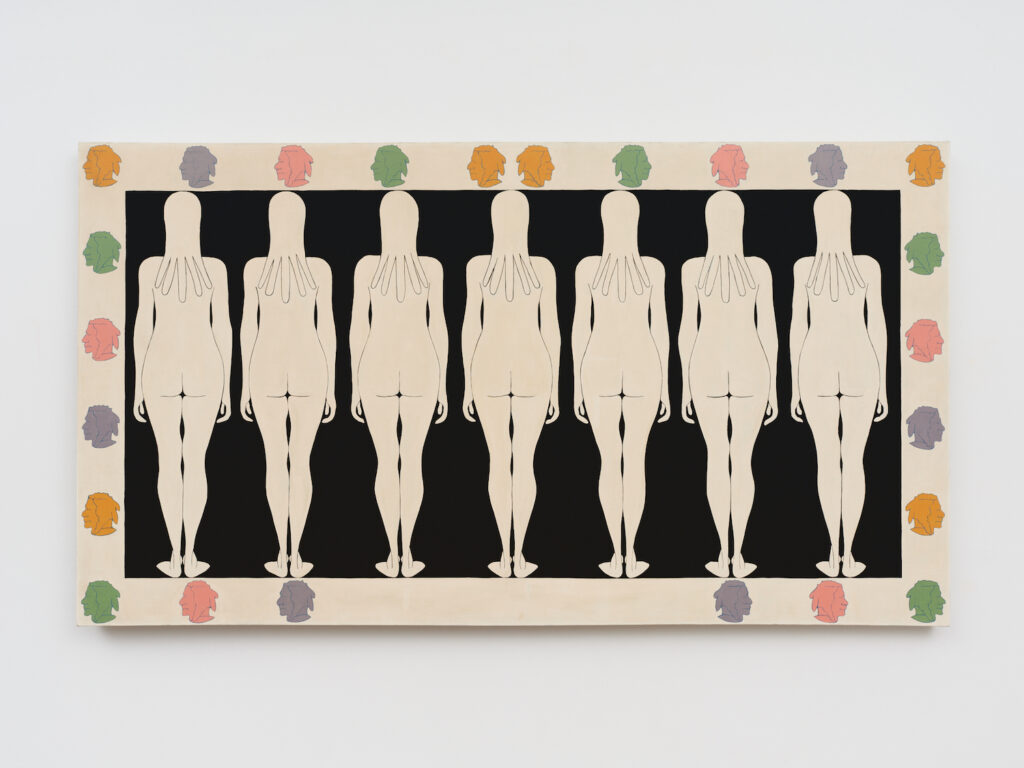Press Release
Puzzler
Richard Artschwager
John Wesley
September 13 through October 21, 2022
Leo Koenig Inc. is pleased to announce the opening of Puzzler, works by Richard Artschwager and John Wesley. These two artists have consistently defied categorization, slipping deftly between the cracks of established “isms” to fashion a personal space unique to their own vision.
Richard Artschwager once said “Sculpture is for the touch, painting is for the eye. I wanted to make a sculpture for the eye and a painting for the touch,” The works in the exhibition illustrate that very point. Between making a living as an artist, Artschwager also worked as a cabinet maker and was a master craftsman. He borrowed many of the techniques and materials used from his craft to further inform his practice. In the groundbreaking work Handle, (1962), a rectangle is crafted from a cylinder of honed and polished wood. Although three-dimensional like a sculpture, it is hung on the wall like a painting, “framing” a view of the wall behind it. In Handle III, Artschwager used one of his favorite materials, formica to help fashion a work that again, hangs on the wall, but is reminiscent of furniture and cabinetry. Artschwager’s painting of a crossword puzzle elevates an everyday activity, captured on Celotex, (which was a common household building material for ceilings), and helps to illustrate the artists intent to perplex and conflate boundaries.
In John Wesley’s paintings we see a graphic style, repetition, which for Wesley accentuated humor, beautiful maidens, animals as characters and famous figures as George Washington’s head appearing as pattern and decoration. Pulling from a Journal dedicated to Johns Wesley’s work “The Unmuzzled Ox,” the artists wife…. wrote this: “Jack never does anything obvious. His ideas come as the mind turns (like the globe) into darkness. His mysterious and varied iconography must have a certain magic, a certain mystery for himself as well. Thus his work has the power of true surrealism. His humor is original, unique to John Wesley. Thus the enigma entwined like a riddle in each painting is the result of his psychic method.” More surrealist in nature than Pop, Wesley’s work is random, yet deliberate, as we journey through a world that is at once humorous, absurd and unnervingly poignant.
Richard Artschwager:
(b. 1923, Washington DC; d. 2013, Albany, NY) After receiving a BA in 1948 from Cornell University, NY, Artschwager studied under Amédée Ozenfant, one of the pioneers of abstraction. In the early 1950s Artschwager became involved in cabinetmaking, producing simple pieces of furniture. After a ruinous workshop fire, he began making sculpture using leftover industrial materials, concurrently expanding into painting, drawing, site-specific installation, and photo-based work. His work has been variously described as Pop art, Minimal art, and conceptual art, but none of these descriptions could adequately define an artist who intentionally reveled in categorical confusion, while working to reveal the levels of fabrication involved in pictorial illusionism.
Richard Artschwager has been the subject of numerous solo exhibitions, first at the Art Directions Gallery, New York, NY, and then with Leo Castelli in 1965. Other solo exhibitions include Neues Museum, Nuremberg, Germany; Museum für angewandte Kunst (MAK), Vienna, Austria; Kunstmuseum Winterthur, Switzerland; Museum of Contemporary Art, Miami, FL; Deutsche Guggenheim Berlin, Germany; Contemporary Art Museum, Saint Louis, MO; Whitney Museum of American Art, New York, NY; and Frances Lehman Loeb Art Center, Vassar College, Poughkeepsie, New York; among others.
John Wesley:
John Wesley has created an ineffable body of work whose subject is no less than the American psyche. While many artists of his generation have used the popular image to explore the cultural landscape, Wesley has employed a comic-strip style and a compositional rigor to make deeply personal, often mysterious paintings that strike at the core of our most primal fears, joys, and desires.
John Wesley has been exhibited and collected by museums worldwide since the 1960s. Surveys of his work have been held at the Stedelijk Museum, Amsterdam, curated by Rudi Fuchs and Kasper Koenig (travelled to Portikus); Museum Ludwigsburg, curated by Udo Kittleman (travelled to DAAD, Berlin); PS1 MoMA, Long Island City, curated by Alana Heiss; Harvard University Art Museums, Cambridge, MA, curated by Linda Norden; Museum Haus Lange, Krefeld, Germany, curated by Martin Henschel; Chinati Foundation, Marfa, TX, curated by Marianne Stockebrand; and Fondazione Prada at the Venice Biennale curated by Germano Celant. Since 2004, the Chinati Foundation, Marfa, TX. has maintained a permanent gallery housing its collection of Wesley’s paintings, as was intended by Judd since the foundation’s inception. In 2014, Wesley was commissioned to create a public art project for the High Line. The artist has had over 70 solo exhibitions.
The Gallery is open Tues-Friday 11-6. Please observe whatever protocols are in place for NYC when visiting. For more information, please call 212.334.7866 or email us at info@leokoenig.com
